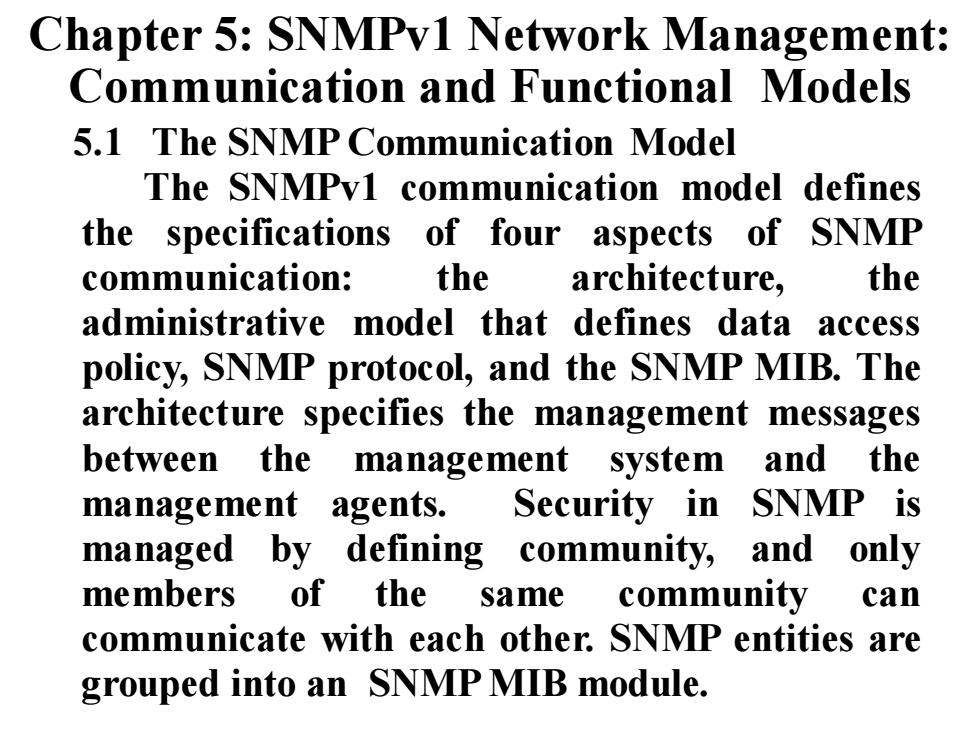
Chapter 5:SNMPv1 Network Management: Communication and Functional Models 5.1 The SNMP Communication Model The SNMPv1 communication model defines the specifications of four aspects of SNMP communication: the architecture, the administrative model that defines data access policy,SNMP protocol,and the SNMP MIB.The architecture specifies the management messages between the management system and t the management agents. Security in SNMP is managed by defining community,and only members of the same community can communicate with each other.SNMP entities are grouped into an SNMP MIB module
Chapter 5: SNMPv1 Network Management: Communication and Functional Models 5.1 The SNMP Communication Model The SNMPv1 communication model defines the specifications of four aspects of SNMP communication: the architecture, the administrative model that defines data access policy, SNMP protocol, and the SNMP MIB. The architecture specifies the management messages between the management system and the management agents. Security in SNMP is managed by defining community, and only members of the same community can communicate with each other. SNMP entities are grouped into an SNMP MIB module
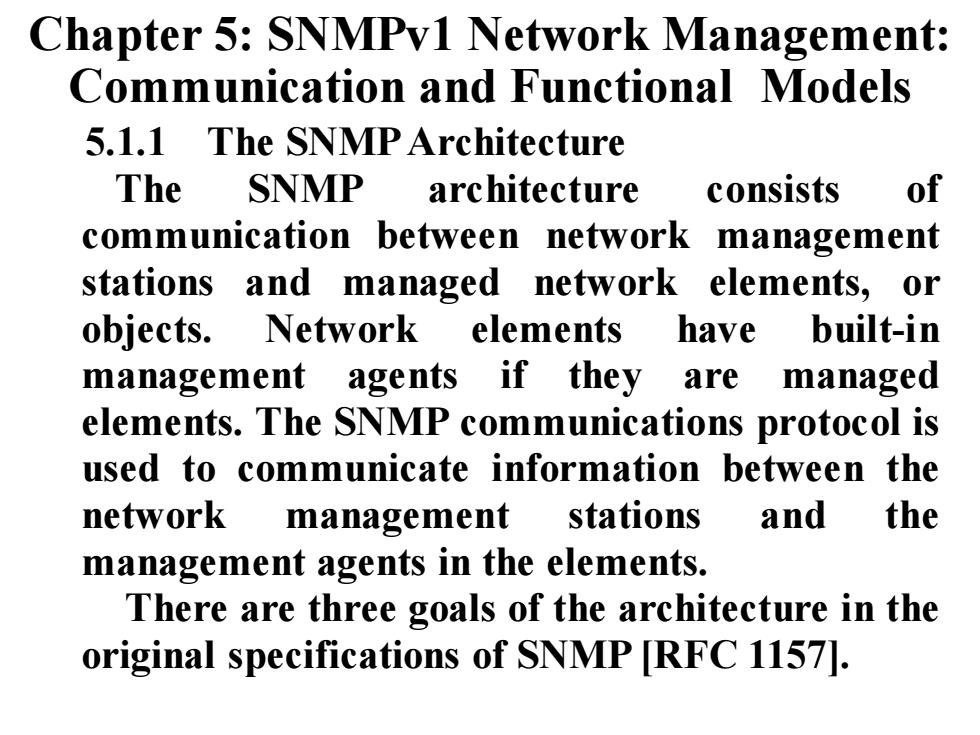
Chapter 5:SNMPv1 Network Management: Communication and Functional Models 5.1.1 The SNMP Architecture The SNMP architecture consists of communication between network management stations and managed network elements,or objects.Network elements have built-in management agents if they are managed elements.The SNMP communications protocol is used to communicate information between the network management stations and the management agents in the elements. There are three goals of the architecture in the original specifications of SNMP [RFC 11571
Chapter 5: SNMPv1 Network Management: Communication and Functional Models 5.1.1 The SNMPArchitecture The SNMP architecture consists of communication between network management stations and managed network elements, or objects. Network elements have built-in management agents if they are managed elements. The SNMP communications protocol is used to communicate information between the network management stations and the management agents in the elements. There are three goals of the architecture in the original specifications of SNMP [RFC 1157]
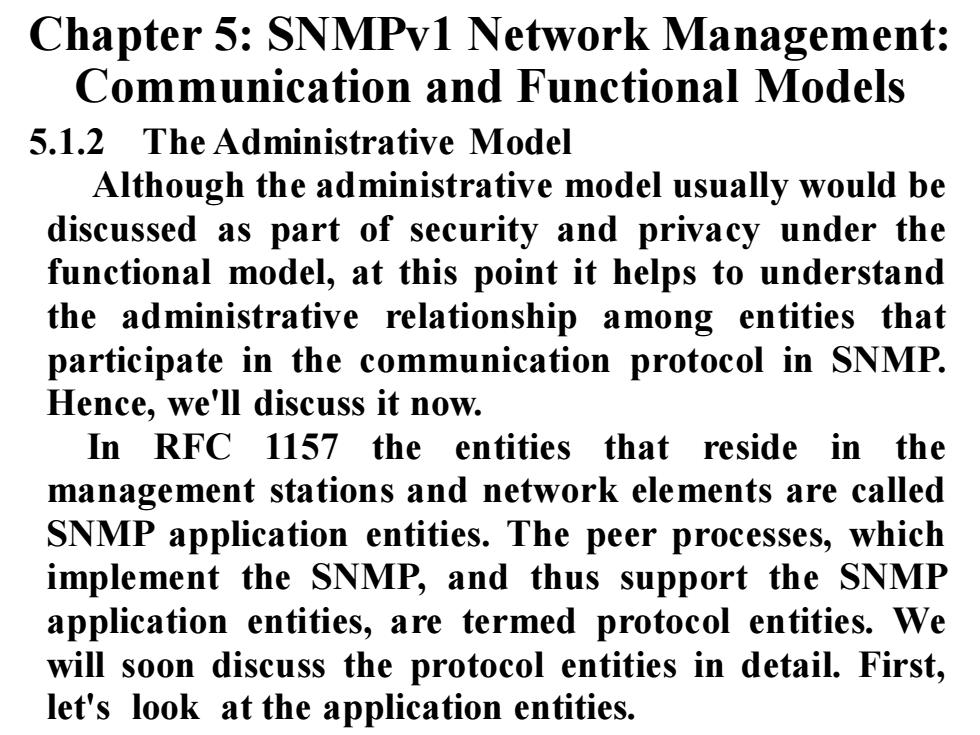
Chapter 5:SNMPv1 Network Management: Communication and Functional Models 5.1.2 The Administrative Model Although the administrative model usually would be discussed as part of security and privacy under the functional model,at this point it helps to understand the administrative relationship among entities that participate in the communication protocol in SNMP. Hence,we'll discuss it now. In RFC 1157 the entities that reside in the management stations and network elements are called SNMP application entities.The peer processes,which implement the SNMP,and thus support the SNMP application entities,are termed protocol entities.We will soon discuss the protocol entities in detail.First, let's look at the application entities
Chapter 5: SNMPv1 Network Management: Communication and Functional Models 5.1.2 The Administrative Model Although the administrative model usually would be discussed as part of security and privacy under the functional model, at this point it helps to understand the administrative relationship among entities that participate in the communication protocol in SNMP. Hence, we'll discuss it now. In RFC 1157 the entities that reside in the management stations and network elements are called SNMP application entities. The peer processes, which implement the SNMP, and thus support the SNMP application entities, are termed protocol entities. We will soon discuss the protocol entities in detail. First, let's look at the application entities
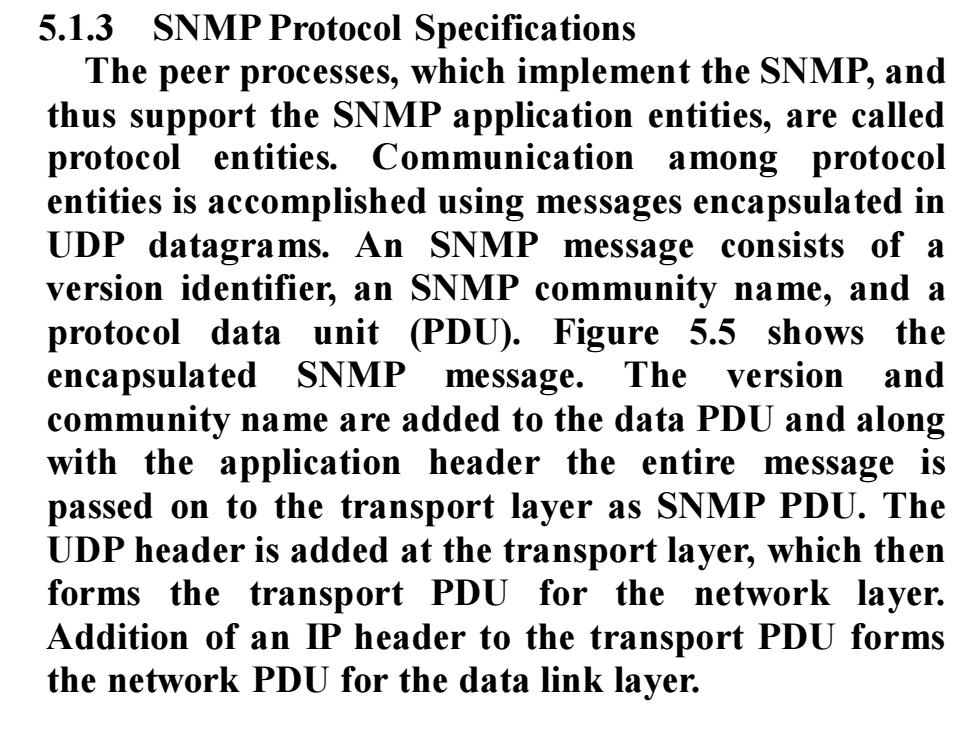
5.1.3 SNMP Protocol Specifications The peer processes,which implement the SNMP,and thus support the SNMP application entities,are called protocol entities.Communication among protocol entities is accomplished using messages encapsulated in UDP datagrams.An SNMP message consists of a version identifier,an SNMP community name,and a protocol data unit (PDU).Figure 5.5 shows the encapsulated SNMP message.The version and community name are added to the data PDU and along with the application header the entire message is passed on to the transport layer as SNMP PDU.The UDP header is added at the transport layer,which then forms the transport PDU for the network layer. Addition of an IP header to the transport PDU forms the network PDU for the data link layer
5.1.3 SNMP Protocol Specifications The peer processes, which implement the SNMP, and thus support the SNMP application entities, are called protocol entities. Communication among protocol entities is accomplished using messages encapsulated in UDP datagrams. An SNMP message consists of a version identifier, an SNMP community name, and a protocol data unit (PDU). Figure 5.5 shows the encapsulated SNMP message. The version and community name are added to the data PDU and along with the application header the entire message is passed on to the transport layer as SNMP PDU. The UDP header is added at the transport layer, which then forms the transport PDU for the network layer. Addition of an IP header to the transport PDU forms the network PDU for the data link layer
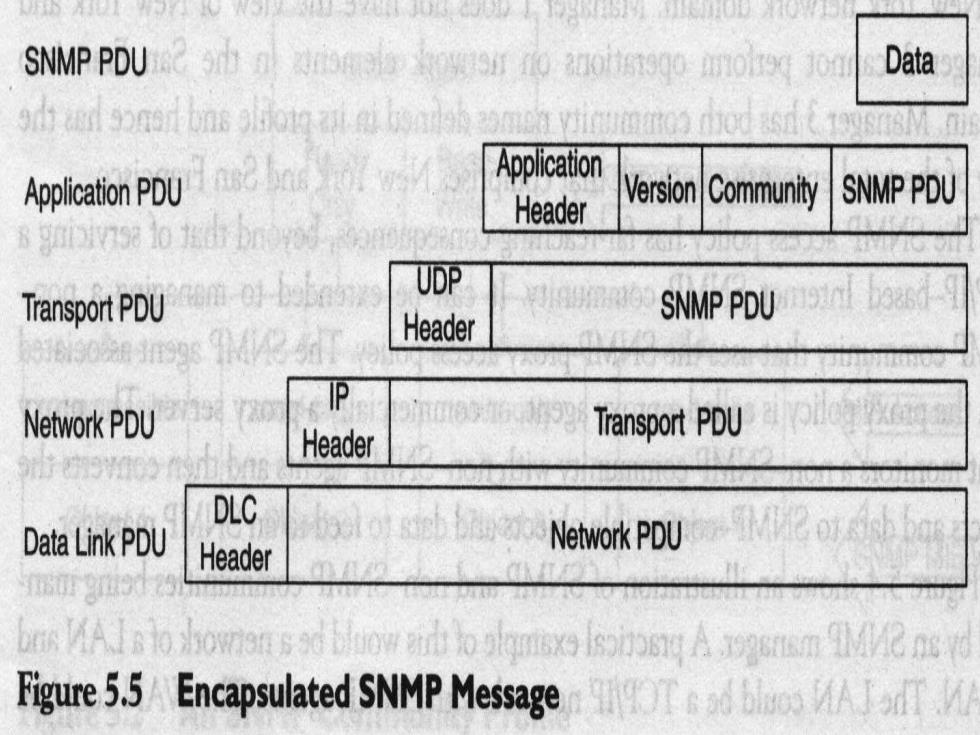
SNMP PDU 203001090 Data Appicaion PDU Appicti /ersion Community SNMP PDU Header Transport PDU m o UDP SNMP PDU Header Network PDU Transport PDU Header DLC Data Link PDU Network PDU Header Figure 5.5 Encapsulated SNMP Message